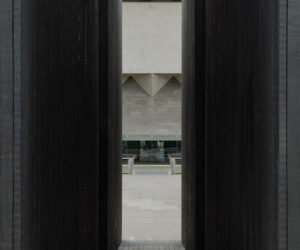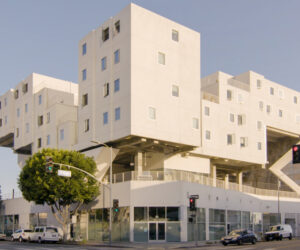Melbourne Design Week 2019: Toxic City? Symposium
Presented by the NGV, Foreground and The New York Times, Toxic City? Symposium will be held on Tuesday 19 March and will bring together local and international experts to evaluate our cities and the systems that sustain them – food, water, and energy – and how these are major factors in climate change and the interlinked cycles of waste and pollution. The speakers – Craig Reucassel (Jury Chair, ABC’s War on Waste), Bonnie Herring (Director, Breathe Architecture), Ross Harding (Founder, Finding Infinity) Prof Sue Anne Ware (Head of School, Architecture and Built Environment, University of Newcastle) and Joost Bakker (Visionary, disruptor and environmental activist) – will explore how we might build cleaner, healthier, more resilient cities, along with a keynote presentation by Dutch artist and innovator, Daan Roosegaarde.
Ahead of the symposium, we spoke with Prof Sue Anne Ware and Bonnie Herring about their perspectives on ‘toxic cities’.
What is a toxic city?
Prof Sue Anne Ware: “Provocation to think about toxic cities, either literally or conceptually, is quite interesting. We always think about post-industrial [places] … or places like Chernobyl, but maybe what we need to think about are systems that every city has that have been disrupted and are not necessarily healthy for any living being or plants or animals.”
Bonnie Herring: “To me, a toxic city is one that doesn’t adequately respond to the environmental challenges we’ve created for ourselves. Through strategic design decisions, architects have the opportunity to reduce the impact of our building construction and operations emissions. As citizens, we can reduce our individual impacts through the choices we make each day. In the midst of a policy vacuum, we can vote with our actions. We can even vote with our plate.”
Is Melbourne a toxic city?
Prof Sue Anne Ware: “If we look at the quality of the water, the air, the soil, the human environments … they’re far from really healthy, dynamic, ecologically diverse. One could say that Melbourne, just by its economic stratification, is toxic.
Or you can think of it in terms of environmental [factors]. The Yarra River … carries a heavy sediment load … because all this stuff is running off the streets and going into it. Yes, its natural ecology is to carry more sediment which makes it browner but it’s what’s in that sediment … that’s not so great for the living creatures and the river itself. I think Melbourne is definitely toxic but could you fix it? What would you do about it?”
Bonnie Herring: “The way that we build our cities could be much improved, and Melbourne is no different.”
What are some examples of efforts made to make our cities better places to live?
Prof Sue Anne Ware: “My favourite example (and I know it’s ages old!) [is] Fed Square, [which uses] the tunnelling for the infrastructure to be a cooling system. Good on the architect, good on the engineer!”
Bonnie Herring: “Our next multi-residential project is at Nightingale Village, which is a precinct of seven buildings designed by seven different architects in Brunswick. That one’s special because it approaches the development itself in a different way, using a design-led, deliberative housing model.
At scale, sustainability initiatives and reductive emissions strategies across construction, operation, and even food systems, can make a real difference.
In Brunswick we’ve got this issue of heat island effect, [so] we’re able to use our vegetation to soften our streetscapes and to cool our local area.”
Having spoken with both Prof Sue Anne and Bonnie, one message is clear: toxicity manifests in many forms and must be countered with a holistically sustainable approach. Or, as Prof Sue Anne summarises, “How do you take something that people think of as a challenge and turn it into an opportunity?” We expect the answer to this question (and more) will be on the agenda next Tuesday.
Tue 19 Mar, 2.30pm–6pm
NGV International
Great Hall



